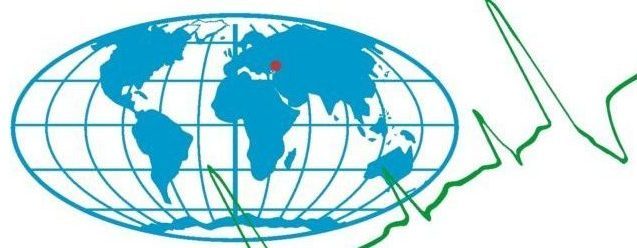S.G. Dobrovolski1, V.P. Yushkov1, 2, I.V. Solomonova1
1FSBIS Water Problems Institute Russian Academy of Sciences (WPI RAS),
RF, Moscow, Gubkina St., 3
Е–mail: sgdo@bk.ru
2Moscow State University M.V. Lomonosov, Faculty of Physics,
RF, Moscow, Leninskiye Gory, 1 b. 2
DOI: 10.33075/2220-5861-2023-3-16-26
UDC 504, 556
Abstract:
The problem of diagnosing changes in the climate system is investigated based on the theory of random functions. As a measure of changes in climate parameters, variations in mathematical expectations of the corresponding processes are taken. In turn, it is proposed to obtain estimates of average values as a result of averaging a large number of «realizations», interpreted as runs of various models of the climatic system. This approach, as an example, is used to analyze and diagnose long-term changes in one of the most important processes in the climate system – the global hydrological cycle. For this purpose, trajectories obtained as a result of runs of various (from 34 to 43) climatic models within the framework of the «historical» experiments of the CMIP-6 project covering the period 1851–2014 are used. The following variations are investigated: (1) evaporation from the ocean surface, (2) precipitation over the ocean, (3) «effective» evaporation from the ocean (precipitation minus evaporation), (4) precipitation over the land, (5) evapotranspiration from the land surface, (6) «effective» precipitation over the land (precipitation minus evaporation), (7) river runoff. It is shown that precipitation over the ocean and evaporation from land largely suppress monotonous trends in average values of evaporation from the ocean and precipitation over land on a secular time scale, respectively. At the same time, this damping does not apply to the trends of the last few decades – possibly related to a combination of a sharp increase in global temperature and explosive volcanic eruptions that preceded this period.
Keywords: climate change diagnosis, global water exchange, CMIP-6 models.
To quote:
REFERENCES
- IPCC, 2022: Climate Change 2022: Impacts, Adaptation, and Vulnerability. Contribution of Working Group II to the Sixth Assessment Report of the Intergovernmental Panel on Climate Change [H.-O. Pörtner, D.C. Roberts, M. Tignor, E.S. Poloczanska, K. Mintenbeck, A. Alegría, M. Craig, S. Langsdorf, S. Löschke, V. Möller, A. Okem, B. Rama (eds.)]. Cambridge; New York: Cambridge University Press, 2022, 63
- Hasselmann K. Stochastic climate models. Part I. Theory. Tellus, 1976, Vol. 28, pp. 473–485.
- Lemke P. Stochastic climate models. Part III. Application to zonally averaged energy models. Tellus, 1977, V. 29, No. 5, pp. 385–392.
- Dobrovol’skiy S.G. Global’naya gidrologiya. Protsessy i prognozy (Global hydrology. Processes and forecasts). Moscow: Geos, 2017, 526 p.
- Dobrovol’skiy S.G., Tatarinovich Ye.V., and Yushkov V.P. Stok vazhneyshikh rek Rossii i yego izmenchivost’ v klimaticheskikh modelyakh proyekta CMIP-5 (The runoff of the most important rivers in Russia and its variability in the climate models of the CMIP-5 project). Meteorologiya i gidrologiya, 2016, No. 12, pp. 44–62.
- Dobrovolski S.G, Yushkov V.P., and Istomina M.N. Statistical Modeling of the Global River Runoff Using GCMs: Comparison with the Observational Data and Reanalysis Results. Water Resources, 2019, Vol. 46, Suppl. 2, pp. S17–S24.
- World Climate Research Programme (WCRP). Available at: URL: https://www.wcrp-climate.org/wgcm-cmip/wgcm-cmip6 (03.02. 2021).
- Earth System Grid Federation (ESGF). Available at: URL: https://esgf–data.dkrz.de/ (03.02.2021).
- Max Planck Institute fur Meteorology (MPI-M). Climate Data Operators. Available at: URL:https://code.mpimet.mpg.de/ projects/cdo (03.02.2021).
- Climate Data Operators. User’s Guide. Ver. 1.6.1. Available at: URL:http://code.zmaw.de/projects/cdo/ (03.02.2021).
- UCAR Community Programs. Available at: URL: https://www. unidata.ucar.edu/software/netcdf/software.html (03.02.2021).
- PCMDI: Program for Climate Model. Diagnosis and Interpretation. Available at: URL:http://pcmdi9/llnl.gov/ (03.02.2021).
- Yaglom A.M. Vvedeniye v teoriyu statsionarnykh sluchaynykh funktsiy (Introduction to the theory of stationary random functions). Uspekhi matematicheskikh nauk, 1952, Vol. 7, Is. 5 (51), pp. 3–168.
- Yaglom A.M. Korrelyatsionnaya teoriya statsionarnykh sluchaynykh funktsiy. S prime-rami iz meteorologii (Correlation theory of stationary random functions. With examples from meteorology). Leningrad: Gidrometeoizdat, 1981, 280 p.
- Yaglom A.M. An introduction to the theory of stationary random functions. N.Y.: Prentice-Hall, Englewood Cliffs, 1962, 235 p.
- Yaglom A.M. Correlation theory of stationary and related random functions. Berlin: Springer, 1987, Vol. 1, Basic results, 526 p.
- Ulrych T.J. and Bishop T. Maximum entropy spectral analysis and autoregressive decomposition. Geophys. Space Phys, 1975, Vol. 13, pp. 183–200.
![]()
